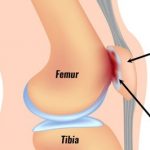Osgood-Schlatter’s disease (OSD) is a fairly common condition in adolescents that results in knee pain and loss of function. Typically, it is characterized by pain and inflammation just below the knee, especially in individuals that are active and engage in sports and other physical activities. As a result, this condition can be quite disruptive to a young athlete, who suddenly finds themselves unable to participate fully in practices or games due to pain. Specifically, in this blog, we will discuss causes, symptoms, and effective physiotherapy treatment of OSD. What causes Osgood-Schlatter’s Disease? OSD is primarily an overuse injury causing the tendon under the knee, the patellar tendon, and the part of the bone it attaches to, the tibial tuberosity to become painful and inflamed. Eventually, the tendon and bone experience repetitive traction and strain through high intensity movements such as running and jumping, and the tendon pulls on the…
Read More


